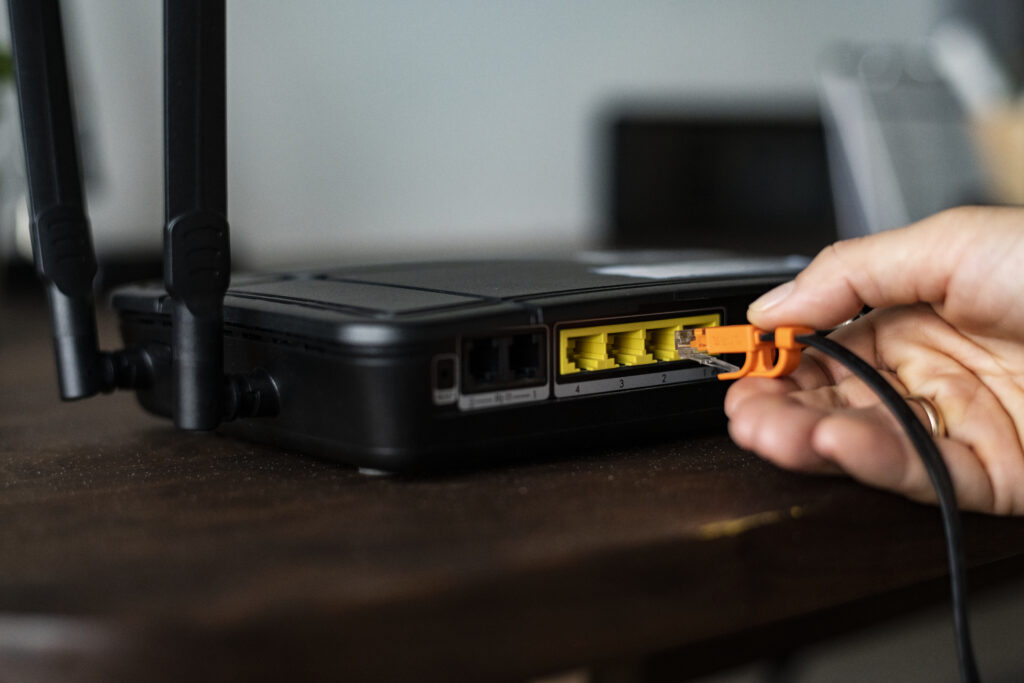May 23 2024
/

What is an SFP Port? Pros and Cons Explained
In the realm of networking, you may have encountered the term “SFP port.” But what does it signify, and why is it important? In this blog post, we will elucidate SFP ports, examining their advantages and disadvantages in a clear and comprehensive manner.
What is an SFP Port?
An SFP port (Small Form-factor Pluggable port) is an interface found on network devices like routers and switches. It enables the addition of various types of connections through the insertion of an SFP module. Think of it as a versatile socket adaptable to different network cables and speeds.
How Does an SFP Port Work?
SFP ports function with SFP modules—compact devices that can be inserted into the port to establish specific connections, such as Ethernet, Fiber Optic, or Copper. A range of modules is available to cater to different requirements, making SFP ports remarkably flexible and adaptable.
Key Pros of Using SFP Ports
1. Flexibility
One of the greatest benefits of SFP ports is their versatility. Rather than being confined to a single type of connection, you can easily swap out SFP modules to accommodate different networking requirements.
2. Scalability
As your network expands, SFP ports facilitate seamless upgrades without the need to replace your entire networking equipment. Simply exchange the module for one with enhanced capabilities.
3. Enhanced Network Performance
SFP modules support high-speed data transfers, improving overall network performance. This is particularly advantageous in settings that demand fast and reliable data transmission.
4. Compatibility
SFP ports are typically compatible with various types of modules, allowing connections to diverse networking standards and devices. This flexibility makes them an excellent choice for mixed environments.
Key Cons of Using SFP Ports
1. Cost
While SFP ports themselves are reasonably priced, the expense of high-quality SFP modules can accumulate, posing a potential challenge for smaller businesses with constrained budgets.
2. Complexity
Managing and configuring SFP modules may demand a higher level of expertise compared to standard network ports, creating a barrier for those lacking technical proficiency.
3. Limited Distance
Although fiber optic SFP modules can span extensive distances, copper-based SFP modules are restricted in range. Extending connections over greater distances may necessitate additional equipment like repeaters.
4. Heat Management
SFP modules can generate significant heat, particularly in high-speed environments. Adequate cooling and ventilation are essential to prevent overheating and ensure reliable operation.
When Should You Use SFP Ports?
SFP ports are particularly useful in various scenarios, including:
- Data Centers: Essential for high-speed, flexible connections.
- Enterprise Networks: Demand scalability and adaptability.
- Telecommunications: Handle long-distance, high-speed data transmission.
- Small to Medium Businesses: Future-proof their network infrastructure.
Conclusion
SFP ports offer a flexible, scalable, and high-performance solution for various networking needs, but they come with challenges like cost and complexity. Understanding these pros and cons can help you decide if SFP ports are right for your network.
By knowing what an SFP port is and its benefits, you can better plan your networking strategy and maximize your investment. Whether you’re an IT professional or a small business owner, this knowledge will help you navigate modern networking complexities.
Frequently Asked Questions
1. What is an SFP port?
An SFP (Small Form-factor Pluggable) port is a modular interface designed for network connectivity. It allows for flexibility by supporting both fiber optic and copper connections, catering to various networking needs.
2. What are the benefits of using SFP ports?
SFP ports offer several benefits, including high-speed data transfer, flexibility in network setup, and scalability. They are suitable for a range of environments from data centers to small businesses.
3. Can I use SFP modules with any switch?
Not all switches support SFP modules. Check the specifications of your switch to ensure compatibility with SFP ports and modules before making a purchase.
5. Are SFP modules hot-swappable?
Yes, most SFP modules are hot-swappable, meaning they can be installed or removed without shutting down the network equipment, allowing for more convenient maintenance and upgrades.
6. What types of connections are supported by SFP ports?
well as copper Ethernet connections. This versatility makes them suitable for different network configurations.
